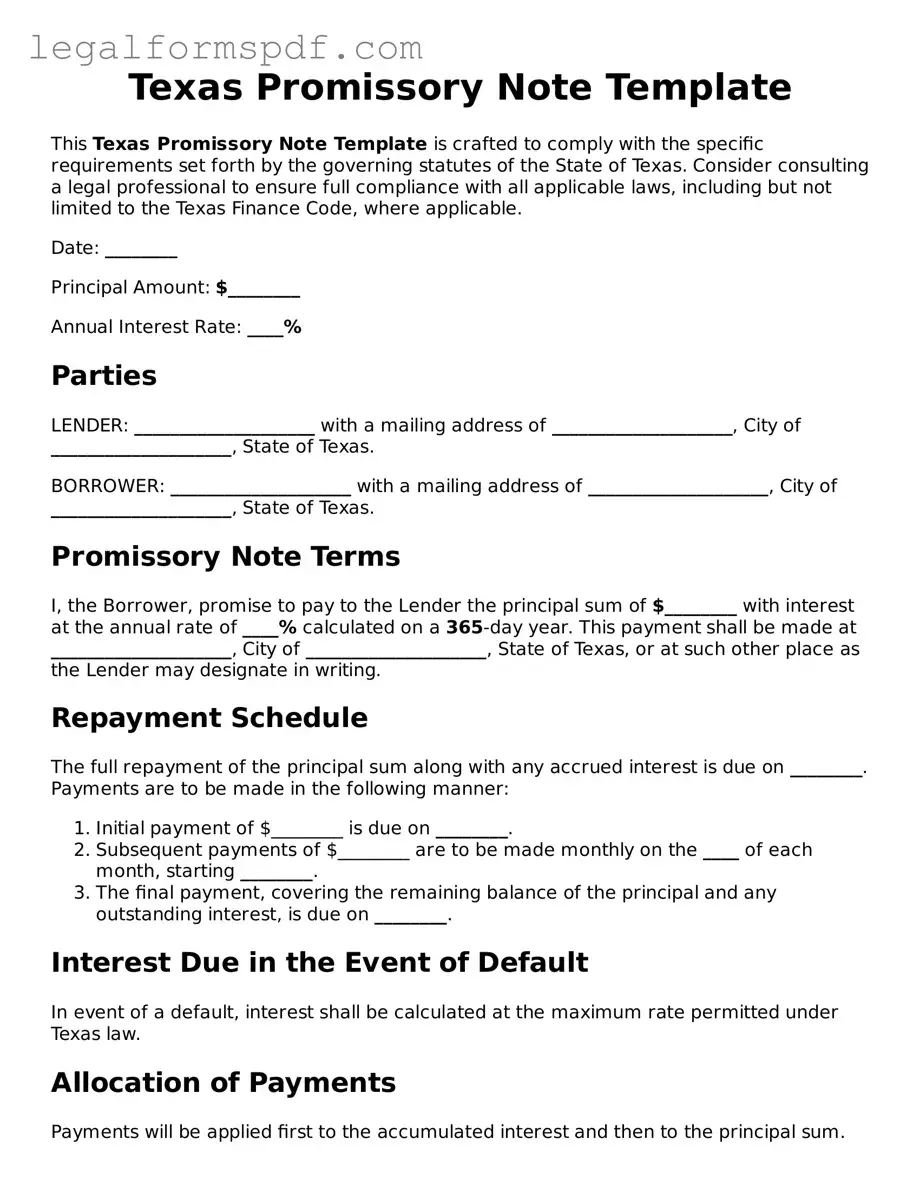Texas Promissory Note Template
This Texas Promissory Note Template is crafted to comply with the specific requirements set forth by the governing statutes of the State of Texas. Consider consulting a legal professional to ensure full compliance with all applicable laws, including but not limited to the Texas Finance Code, where applicable.
Date: ________
Principal Amount: $________
Annual Interest Rate: ____%
Parties
LENDER: ____________________ with a mailing address of ____________________, City of ____________________, State of Texas.
BORROWER: ____________________ with a mailing address of ____________________, City of ____________________, State of Texas.
Promissory Note Terms
I, the Borrower, promise to pay to the Lender the principal sum of $________ with interest at the annual rate of ____% calculated on a 365-day year. This payment shall be made at ____________________, City of ____________________, State of Texas, or at such other place as the Lender may designate in writing.
Repayment Schedule
The full repayment of the principal sum along with any accrued interest is due on ________. Payments are to be made in the following manner:
- Initial payment of $________ is due on ________.
- Subsequent payments of $________ are to be made monthly on the ____ of each month, starting ________.
- The final payment, covering the remaining balance of the principal and any outstanding interest, is due on ________.
Interest Due in the Event of Default
In event of a default, interest shall be calculated at the maximum rate permitted under Texas law.
Allocation of Payments
Payments will be applied first to the accumulated interest and then to the principal sum.
Prepayment
The Borrower reserves the right to prepay the principal amount, in whole or in part, at any time without penalty.
Acceleration Clause
If the Borrower fails to make a scheduled payment, the Lender may demand the immediate payment of the entire remaining balance and accrued interest.
Governing Law
This Promissory Note is to be governed under the laws of the State of Texas.
Agreement to Terms
The Parties agree to the terms outlined in this Promissory Note. Signatures below serve as confirmation of the agreement.
Lender Signature: ____________________ Date: ________
Borrower Signature: ____________________ Date: ________
